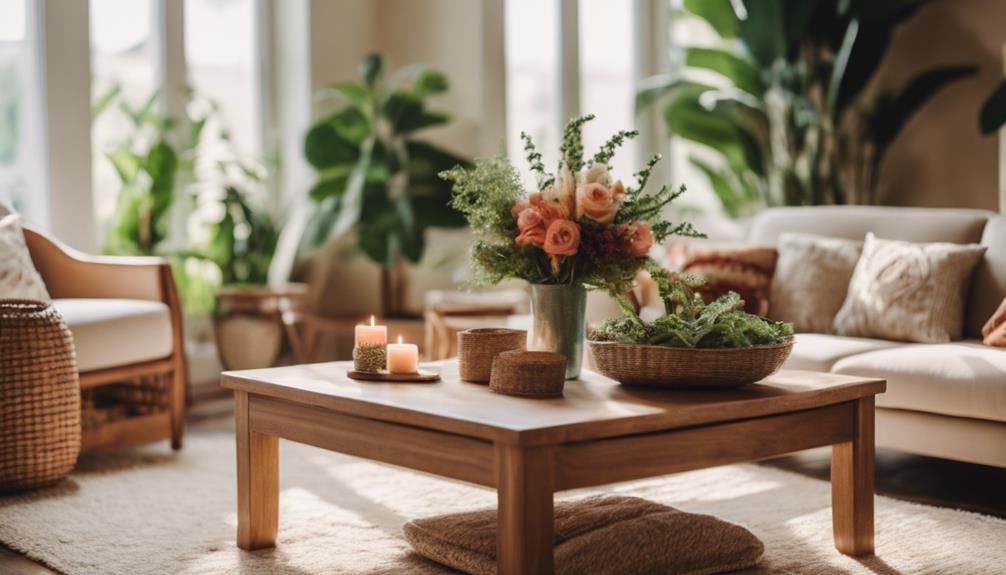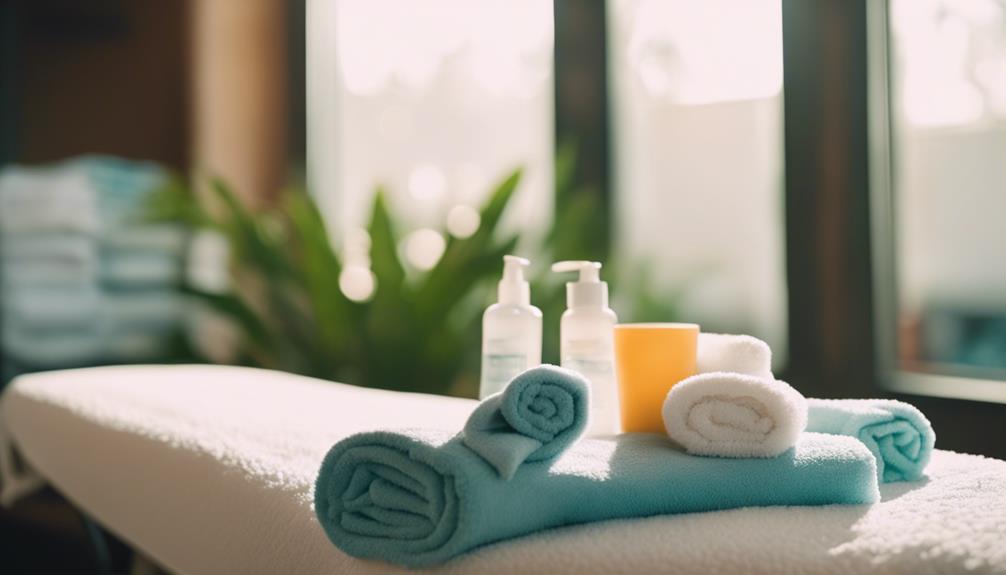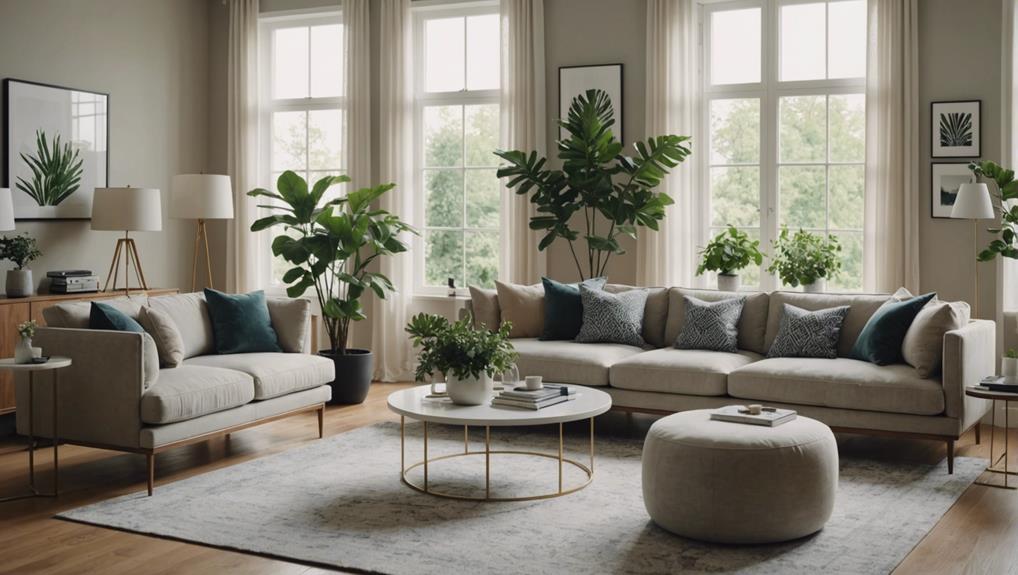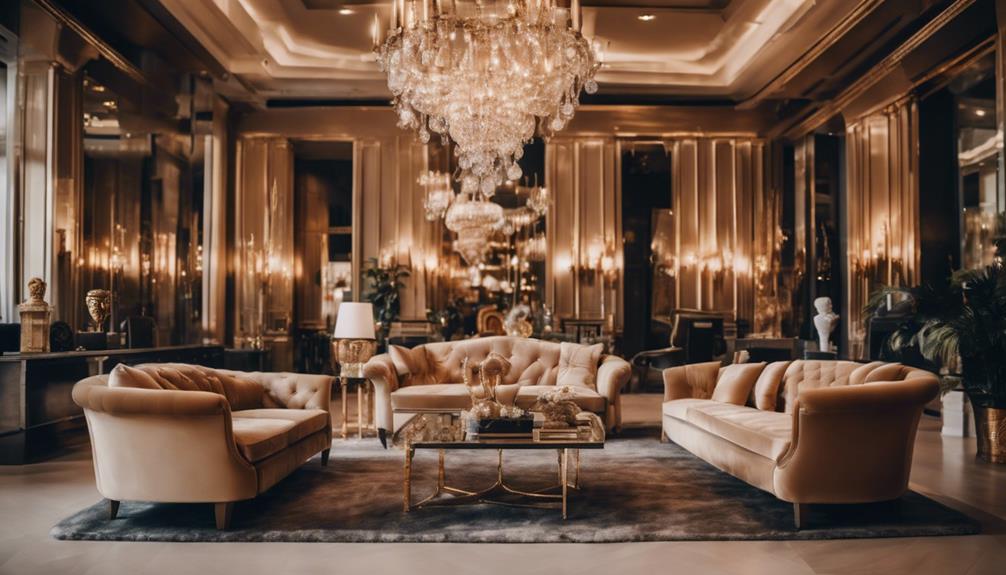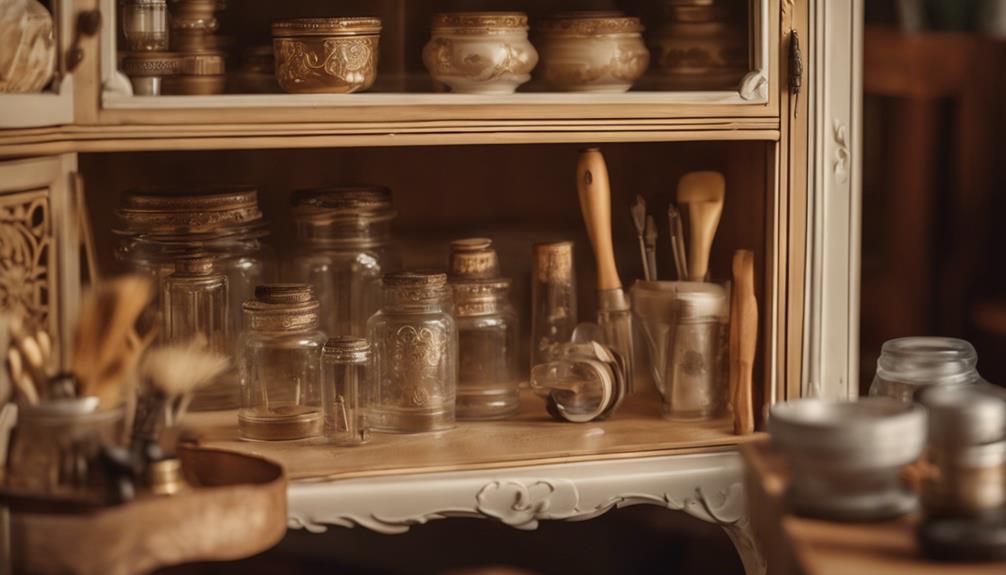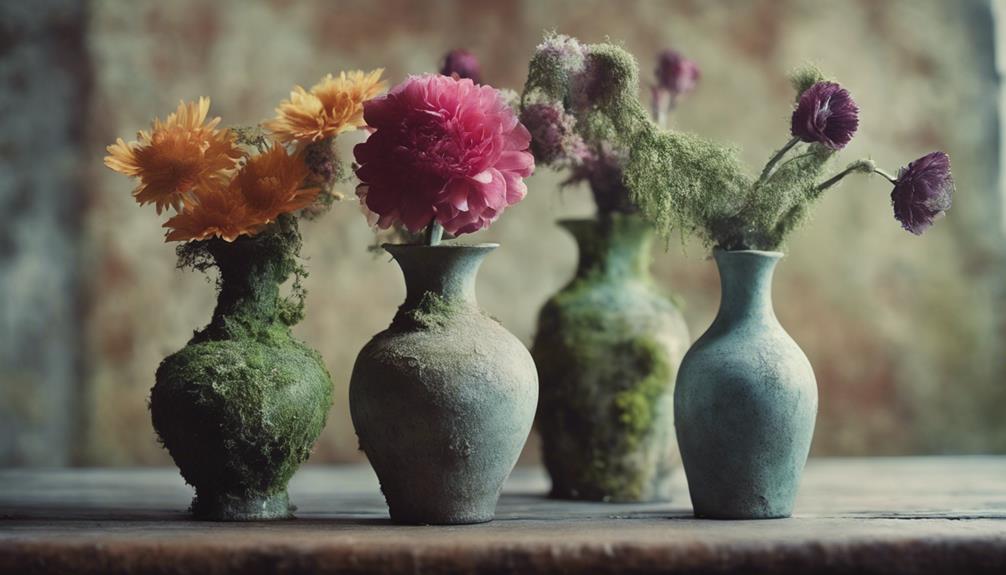Incorporating natural elements into your home decor can truly transform your space into a stunning retreat. You can enhance your mood and well-being by maximizing natural light and adding greenery, which purifies the air and reduces stress. Opt for sustainable materials like wood and stone, and layer organic textures for a warm, inviting atmosphere. Simple touches, like hanging planters or indoor herb gardens, add vibrancy and life. By connecting with nature through biophilic design, you create an ambiance that feels both tranquil and alive. There's so much more to discover about making your home a peaceful oasis!
Key Takeaways
- Integrate indoor plants to improve air quality and create a calming atmosphere for relaxation and mental well-being.
- Maximize natural light with larger windows or mirrors to enhance mood and productivity in your living spaces.
- Use sustainable materials like bamboo and reclaimed wood to promote eco-friendly decor while adding unique textures to your home.
- Layer natural textures such as jute, cotton, and stone to create warmth and visual interest in your interior design.
Understanding Biophilic Design
Biophilic design connects you with nature by bringing natural elements like light, materials, and greenery into your home. This approach emphasizes your inherent desire to connect with the environment, creating spaces that feel more alive and inviting. By incorporating biophilic design, you can maximize natural light, which not only brightens your space but also positively impacts your mood and energy levels.
Using natural materials in your home decor is an essential aspect of biophilic design. Think about integrating wood, stone, and organic textiles that reflect the beauty of nature. These materials not only create a warm atmosphere but also promote sustainability, aligning with eco-friendly living practices. When you choose natural materials, you're not just enhancing the aesthetics of your space; you're also fostering a deeper connection with the outdoors.
Incorporating plants into your living areas is another fundamental element of biophilic design. They purify the air and provide a calming presence, which is vital for your mental well-being.
Key Benefits of Natural Elements
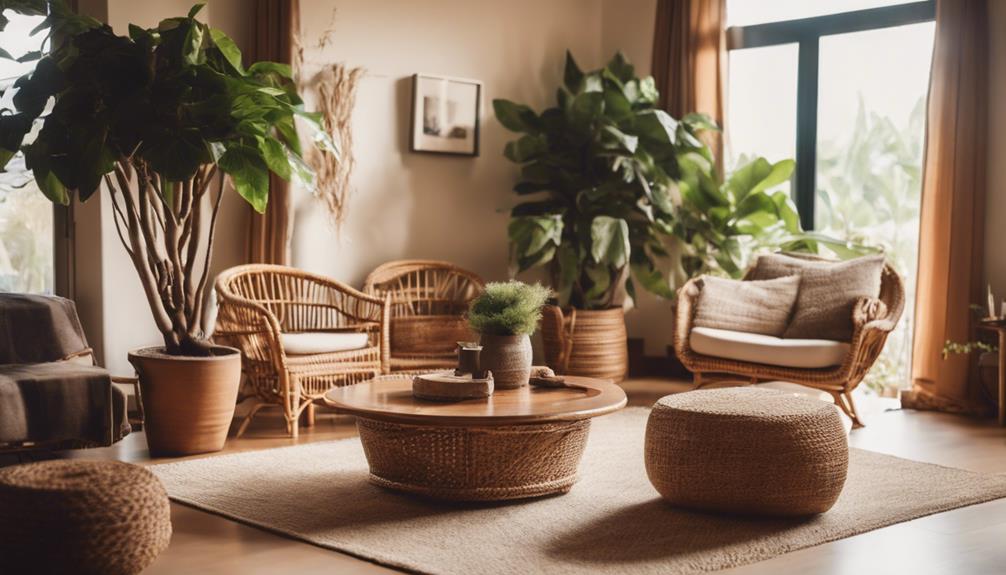
When you incorporate natural elements into your home, you're not just beautifying your space; you're also boosting your well-being.
Improved air quality, stress reduction, and a better mood are just a few of the benefits that come from infusing your decor with nature.
Let's explore how these key advantages can transform your living environment.
Enhanced Air Quality
Incorporating natural elements like plants and wood into your home decor not only beautifies your space but also boosts air quality, making your environment healthier and more inviting. Indoor plants act as natural components that absorb toxins while releasing oxygen, effectively purifying the air you breathe. This leads to a healthier living area where you can thrive.
Moreover, using wood in your decor helps regulate indoor humidity levels. By doing so, it reduces the presence of allergens, making your home more comfortable and enjoyable.
Stone surfaces are another excellent choice, as they're easy to clean and help minimize dust and allergens that could affect your respiratory health.
Stress Reduction Techniques
Natural elements like plants and wood can transform your home into a serene retreat that effectively reduces stress and promotes relaxation. Incorporating natural elements into your decor creates calming spaces that help you unwind after a long day. The presence of indoor plants not only enhances the aesthetic but also fosters mindfulness and tranquility, making it easier for you to let go of daily tensions.
Biophilic design, which emphasizes a connection to nature, supports improved mental health by encouraging restful environments. When you surround yourself with natural materials, you're more likely to experience a sense of calm and comfort. These stress reduction techniques can markedly lower your anxiety levels, allowing for a more peaceful atmosphere.
Moreover, the beauty of wood and greenery evokes positive emotional responses, transforming any room into a sanctuary. As you create spaces that reflect nature, you're also paying tribute to your well-being.
Improved Mood Boosts
Surrounding yourself with natural elements not only creates a calming space but also greatly boosts your mood and overall well-being. By integrating these elements into your home, you can experience significant emotional benefits.
Here are three key ways natural elements can elevate your mood:
- Enhanced Natural Light: Maximizing natural light through large windows or skylights can increase serotonin levels, making you feel happier and more energetic.
- Invigorating Organic Textures: Incorporating wood, stone, and plants provides organic textures that create a warm, inviting atmosphere. This connection to nature can reduce anxiety and enhance relaxation.
- Nature-Inspired Colors: Using soft greens and earthy tones in your decor fosters a tranquil environment, improving mental clarity and emotional stability.
Integrating Greenery Into Spaces
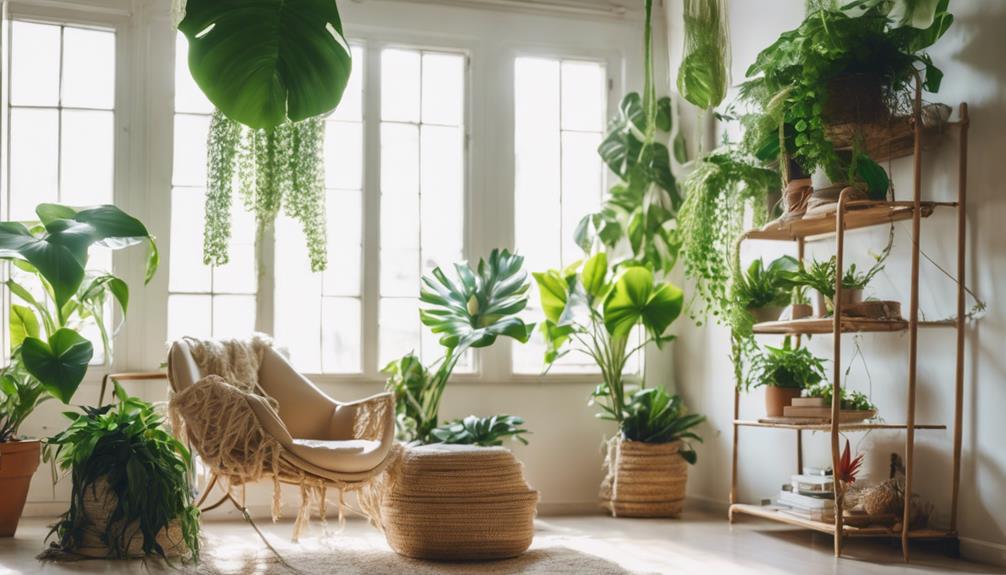
Bringing greenery into your spaces can breathe new life into your home while improving air quality and creating a soothing atmosphere. Integrating greenery into your home decor not only enhances visual appeal but also promotes well-being. Start by incorporating small potted plants, like succulents or ferns, to revitalize dull surfaces. Grouping plants in odd numbers creates a visually balanced and inviting environment.
Consider mixing various types of greenery to add depth; airy ferns paired with sturdy succulents can create beautiful contrasts. Indoor herb gardens are a great option, too, offering aromatic benefits that enhance your culinary experiences in the kitchen.
To maximize space, utilize hanging planters or wall-mounted greenery, especially in smaller areas, making them feel vibrant and connected to nature.
Here's a helpful guide to get started:
| Plant Type | Benefits |
|---|---|
| Succulents | Low maintenance, unique shapes |
| Ferns | Air-purifying, lush texture |
| Herbs | Aromatic, culinary use |
| Hanging Plants | Space-saving, visual interest |
The Role of Natural Light
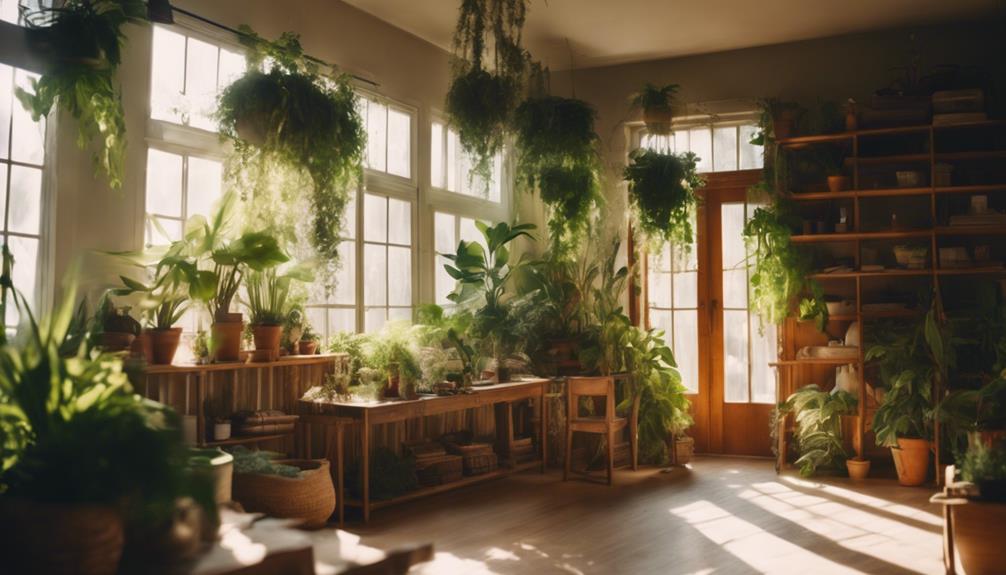
Light plays an essential role in shaping the ambiance of your home, influencing both mood and productivity. Natural light, in particular, can elevate your space, bringing nature indoors and creating a warm, inviting atmosphere. By maximizing exposure to sunlight, you can enhance your well-being and make your home feel more open and airy.
Here are three effective ways to increase natural light in your home:
- Ample Windows and Glass Doors: Installing larger windows or sliding glass doors allows sunlight to flood your living spaces, forging a strong connection with the outdoors.
- Skylights: Consider adding skylights to brighten areas that lack wall space for windows, transforming dark corners into vibrant spots filled with natural light.
- Mirrors: Strategically placing mirrors can reflect natural light throughout the room, creating an illusion of more space and amplifying the light's impact.
With these adjustments, you'll not only enjoy improved mood and productivity but also experience the dynamic atmospheres that natural light can create.
Embrace the beauty of sunlight and let it transform your home!
Enhancing Decor With Textures
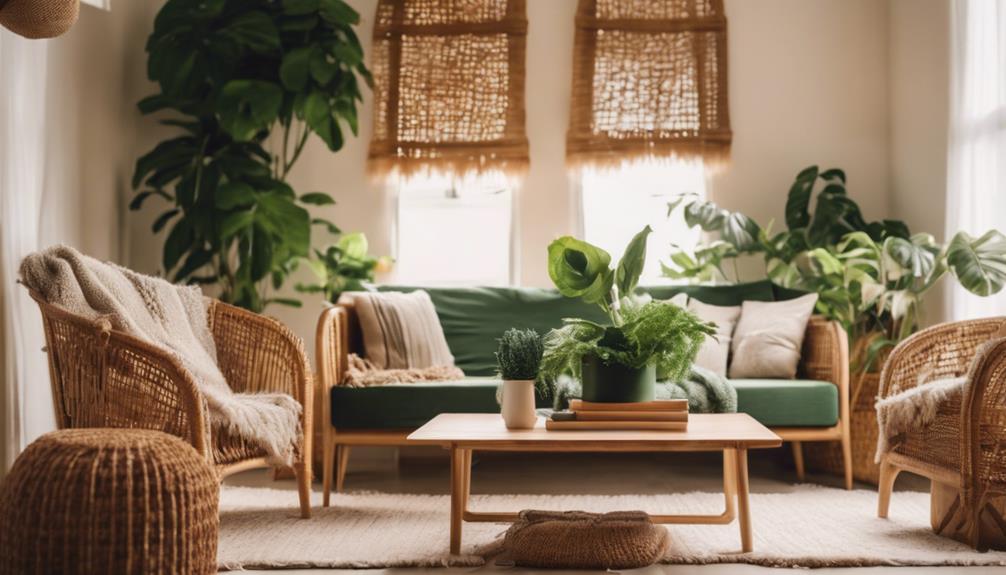
To enhance your decor, consider layering different natural textures that bring warmth and depth to your space.
Mixing patterns creatively, like pairing soft fabrics with bold designs, can create a dynamic atmosphere.
Incorporating unique materials, such as wood and stone, not only adds visual interest but also connects your home to nature.
Layering Natural Textures
Layering natural textures like jute, cotton, and grasscloth instantly adds depth and warmth to your decor, creating a calming atmosphere that invites relaxation.
When you incorporate these elements into your interior design, you not only enhance the visual appeal but also create a cozy environment conducive to well-being.
Here are three effective ways to layer natural textures in your home:
- Rugs and Throws: Start with a jute rug as your base and add cotton or wool throws on your sofa. This combination provides both softness and tactile appeal, making your space feel inviting.
- Wall Treatments: Consider using grasscloth wallpaper or wooden paneling. These natural materials bring warmth to your walls, creating a serene backdrop for your decor.
- Textured Accents: Incorporate textured pillows and woven baskets. They can introduce visual interest and create a layered look that feels organic and harmonious.
Mixing Patterns Creatively
Mixing patterns creatively can transform your space, adding visual intrigue and personality to your home decor. By incorporating a range of natural materials and textures, you can achieve a harmonious yet dynamic aesthetic. Start with layering elements like jute rugs and grasscloth wallpaper to create depth and a calming atmosphere.
Try mixing various patterns in your textiles, such as bold floral cushions paired with subtle striped throws. This contrast invites comfort while enhancing your room's overall appeal. Using natural materials like linen and cotton for your textiles introduces warmth, making your space feel inviting.
Aim for balance; combine bold patterns with softer textures to prevent overwhelming your design. For example, textured pillows can contrast beautifully against smooth furniture surfaces, creating a visually appealing and cozy environment.
Incorporating Unique Materials
Incorporating unique materials like wood, stone, and rich textiles instantly elevates your decor, adding warmth and inviting texture to your space. By integrating these natural materials, you create a cozy atmosphere that feels both stylish and grounded.
Here are three ways to enhance your decor with unique textures:
- Layer Textures: Combine jute rugs with linen or cotton throw pillows. This layering approach adds depth, inviting comfort while showcasing various elements in your home.
- Accent with Wallpaper: Use grasscloth wallpaper to introduce a striking textural element. This choice adds visual interest and creates a unique focal point on your walls.
- Choose Live Edge Furniture: Opt for live edge wooden furniture that highlights the natural beauty of the wood. It serves as both functional decor and a conversation starter.
Mixing smooth wood surfaces with rough stone accents can create a dynamic contrast, making your space feel more engaging.
Seasonal Inspirations for Spring
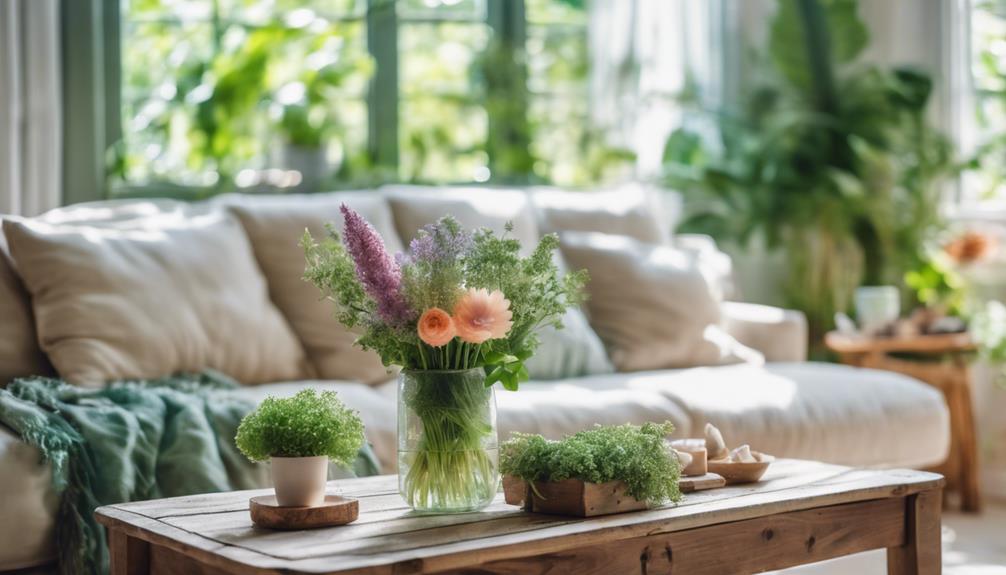
Spring offers a perfect opportunity to rejuvenate your home by embracing natural elements that enhance both ambiance and your connection to the outdoors.
Start by maximizing natural light in your living spaces with lighter window treatments. This simple change can boost your mood and create a new atmosphere that reflects the vibrancy of the season.
Incorporate decorative fruit displays in your kitchen, introducing vivid colors that make the space feel lively and inviting. Fresh fruits not only look great but also serve as a delicious snack. Additionally, consider starting an indoor herb garden. These aromatic plants provide culinary benefits while contributing to a greener, more organic feel in your home.
For a calming aesthetic, opt for seasonal styling schemes that emphasize neutral tones. This approach allows the beauty of your natural elements to shine without overwhelming the space.
Creative Ways to Use Water
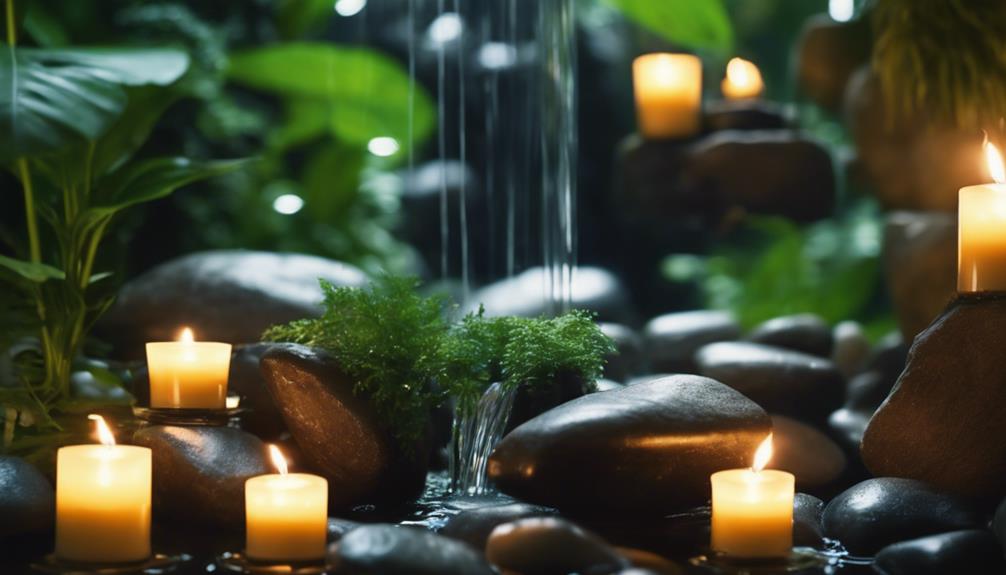
Using water features like indoor fountains or aquariums can transform your home into a serene oasis, enhancing relaxation and adding a unique focal point to your decor.
The soothing sounds of trickling water promote a calming atmosphere, making it an ideal addition to any room. Plus, these water elements can help improve humidity levels, contributing to better air quality and overall comfort in your space.
Here are three creative ways to incorporate water into your home design:
- Indoor Fountains: Set up a stylish indoor fountain in your living room or entryway. The gentle sound of flowing water will create a peaceful ambiance, drawing guests' attention.
- Aquariums: Consider an aquarium as a vibrant centerpiece. Not only does it add visual interest, but watching fish swim can also be incredibly relaxing.
- Water-Inspired Art: If you can't install physical water features, use artwork that depicts lakes, oceans, or serene landscapes to evoke tranquility and connect with nature.
Choosing Sustainable Materials
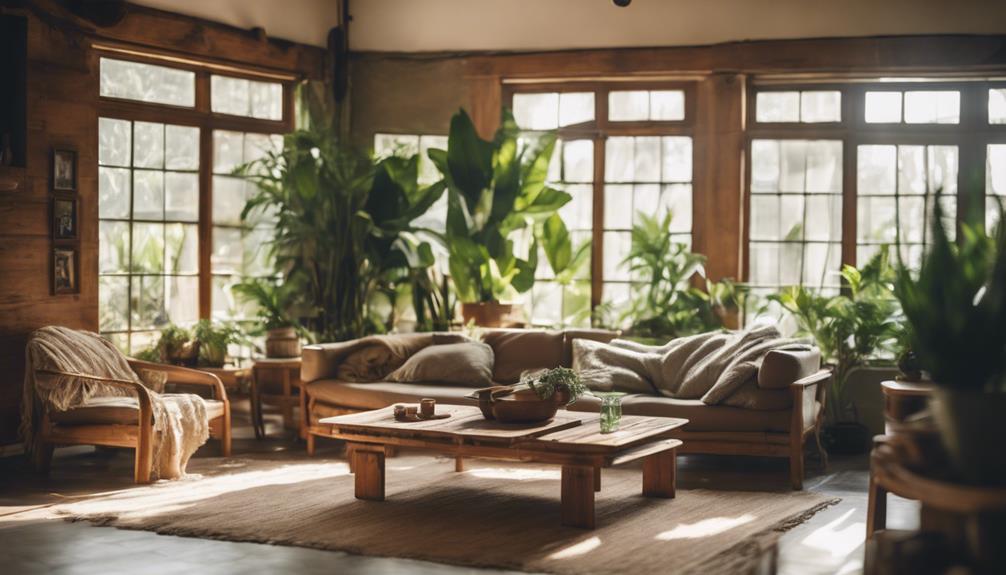
Choosing sustainable materials for your home decor not only benefits the environment but also adds unique character and warmth to your space. By opting for materials like bamboo, reclaimed wood, and recycled metals, you can greatly reduce your environmental footprint while infusing your home with distinctive charm. Sustainable materials often showcase rich textures and colors that synthetic options just can't match.
Natural finishes further enhance this aesthetic, creating a cozy atmosphere and promoting healthier indoor air quality. For example, using sustainably sourced wood furniture can help regulate indoor humidity and make your living space more inviting. Additionally, incorporating natural fibers such as wool, linen, and cotton guarantees your decor remains biodegradable and free from harmful chemicals typically found in synthetic alternatives.
Consider stone surfaces, too; they're durable, easy to clean, and require fewer harsh chemicals, making them a practical choice for a sustainable home. By choosing these materials, you not only enhance your home's beauty but also support responsible forestry practices and sustainable production methods.
Designing for Wellness and Harmony
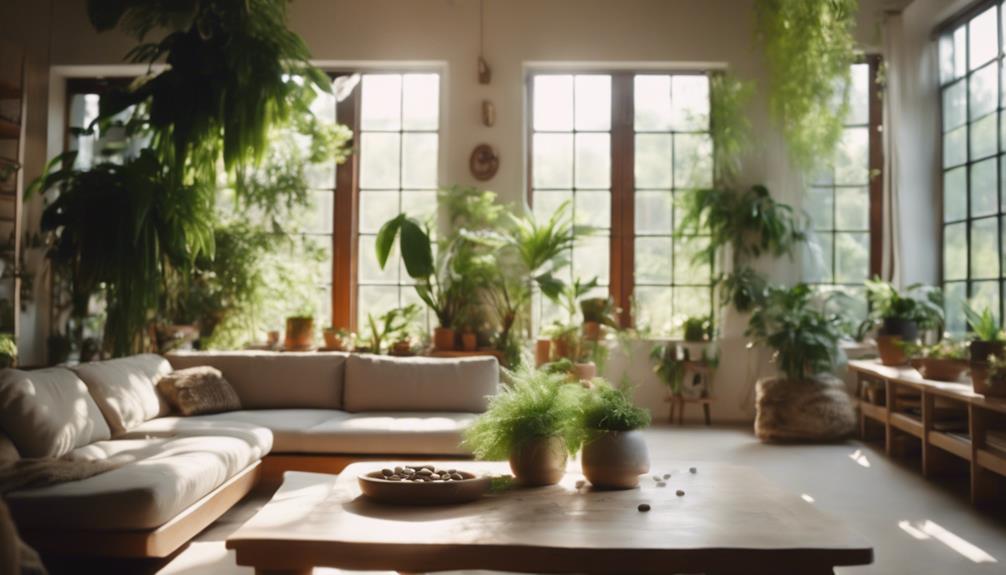
Incorporating natural elements into your home decor can create a calming atmosphere that promotes wellness and harmony. By embracing biophilic design, you can enhance your well-being and transform your living space into a sanctuary.
Here are three effective ways to achieve this:
- Add Plants: Integrate a variety of plants to purify the air and reduce stress. Their presence can notably uplift your mood and create a serene environment.
- Maximize Natural Light: Use ample windows and reflective surfaces to let in sunlight. This not only boosts your energy levels but also helps regulate your sleep cycles, contributing to a healthier lifestyle.
- Choose Eco-Friendly Materials: Opt for natural materials like wood, stone, and organic fibers. These choices not only improve indoor air quality by reducing allergens but also bring a sense of tranquility to your home.
Frequently Asked Questions
Why Is Nature Important in Interior Design?
Nature's essential in interior design because it creates serene environments that reduce stress and improve mood. By incorporating natural elements, you enhance your mental well-being, boost creativity, and foster a deeper connection to your surroundings.
What Design Is Inspired by Natural Elements?
Did you know that biophilic design can reduce stress levels by up to 60%? When you embrace natural elements like wood, stone, and plants in your spaces, you create a calming, inviting atmosphere that enhances well-being.
What Are the Elements of Design in Nature?
The elements of design in nature include organic shapes, natural textures, and earthy colors. You'll find inspiration in patterns like leaves and stones, which evoke tranquility and create a harmonious connection to the environment around you.
How Do You Decorate With Things Found in Nature?
You can decorate with things found in nature by collecting unique items like stones, twigs, or dried flowers. Create displays that reflect your adventures, and let these elements bring organic beauty and warmth into your space.
Conclusion
By weaving natural elements into your home decor, you're not just transforming your space; you're creating an oasis of tranquility.
Imagine lush greenery draping from your shelves, sunlight streaming through large windows, and the soothing sound of water flowing nearby.
Each texture and sustainable material you choose tells a story, wrapping your home in warmth and comfort.
Embrace this journey, and watch as your living space blooms into a vibrant sanctuary that nurtures your well-being and spirit.
